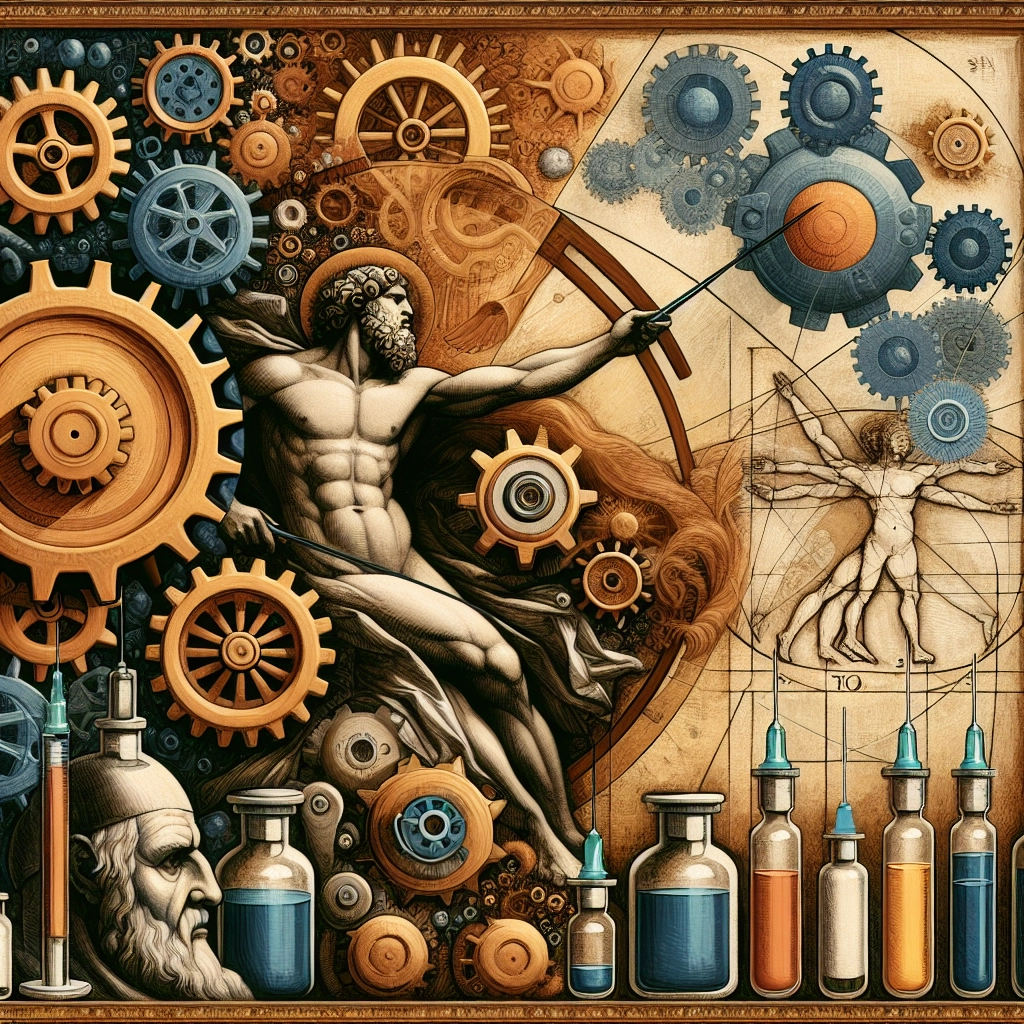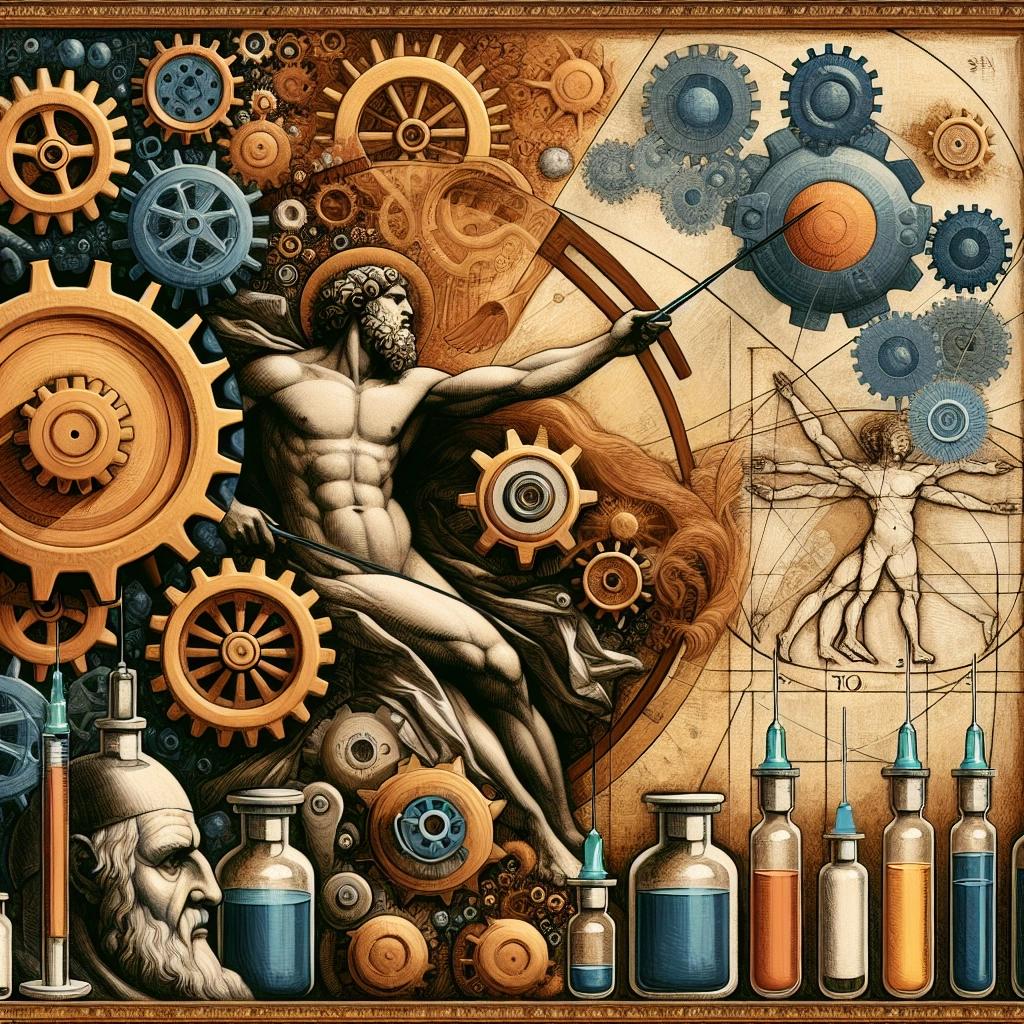The Invisible Armor: Unraveling the Science of Vaccines
 Quantum Cyber Solutions
Quantum Cyber Solutions

Published on
Saturday, August 19, 2023
The Invisible Armor: Unraveling the Science of Vaccines
===========================================================
Authors

Name
Eric deQuevedo 😄
Twitter
💉 A Shot of Hope: The Life-Saving Power of Vaccines 💉
In a world where infectious diseases can spread like wildfire, vaccines have emerged as a beacon of hope, a medical marvel that has saved countless lives and reshaped the landscape of public health. From the eradication of smallpox to the control of once-devastating illnesses like polio and measles, vaccines have proven to be one of the most effective tools in our fight against disease. But have you ever wondered how these tiny shots work their magic? In this blog post, we'll unravel the science behind vaccines and explore the fascinating world of immunology.
🩸 The Immune System: Our Body's Natural Defense 🩸
To understand how vaccines work, we first need to delve into the intricate workings of our immune system. This complex network of cells, tissues, and organs acts as our body's natural defense against invading pathogens, such as viruses and bacteria.
When a harmful microbe enters our body, the immune system springs into action:
Innate Immunity: The first line of defense, consisting of physical barriers (like skin and mucous membranes), chemical barriers (such as stomach acid), and general immune cells that attack foreign invaders non-specifically.
Adaptive Immunity: A more targeted response that develops over time, involving specialized white blood cells called lymphocytes (B cells and T cells) that can recognize and remember specific pathogens, creating a long-lasting defense.
The adaptive immune response is particularly important for vaccines, as it enables our body to create a "memory" of the pathogen and respond quickly and effectively if we encounter it again in the future.
🦠 Vaccines: Training the Immune System 🦠
Vaccines work by introducing a harmless version or component of a pathogen into the body, typically via injection, oral administration, or nasal spray. This can be in the form of:
Inactivated (killed) viruses or bacteria: The pathogen is treated with heat, chemicals, or radiation to render it inactive while still maintaining its recognizable structure.
Weakened (attenuated) live viruses or bacteria: The pathogen is modified to reduce its virulence, making it less likely to cause disease but still able to stimulate an immune response.
Toxoid vaccines: Inactivated bacterial toxins that can elicit immunity against the harmful effects of the bacteria.
Subunit, recombinant, or conjugate vaccines: Specific parts of the pathogen, such as proteins or sugars, are isolated or synthesized to create a targeted immune response.
When the vaccine enters the body, the immune system recognizes it as foreign and mounts a response, producing antibodies and activating immune cells specific to that pathogen. This process usually takes several weeks, which is why most vaccines require multiple doses to build up a strong, long-lasting immunity.
🔬 The Science of Antibodies: Molecular Watchdogs 🔬
Antibodies are a critical component of the immune response triggered by vaccines. These Y-shaped proteins, produced by B cells, are designed to recognize and bind to specific parts of a pathogen called antigens.
When a vaccinated person encounters the actual pathogen, their immune system is primed and ready to act:
Neutralization: Antibodies can directly bind to the pathogen, preventing it from entering cells and causing infection.
Opsonization: By coating the surface of the pathogen, antibodies make it easier for other immune cells (like macrophages) to identify and destroy the invader.
Complement activation: Certain antibodies can trigger a cascade of immune system proteins, known as the complement system, which can help to kill the pathogen and promote inflammation.
The incredible specificity and diversity of antibodies allow our immune system to recognize and combat a vast array of pathogens, making them a vital tool in the effectiveness of vaccines.
🌍 Herd Immunity: Protecting the Community 🌍
One of the most remarkable aspects of vaccines is their ability to provide protection not just for the individual, but for the entire community through a phenomenon called herd immunity.
When a large enough portion of a population is vaccinated against a disease, it becomes much harder for the pathogen to spread, as it encounters fewer susceptible individuals. This indirect protection extends to those who cannot be vaccinated due to age, health conditions, or other factors, creating a safety net for the most vulnerable members of society.
However, herd immunity is fragile and requires a high level of vaccine coverage to be effective. When vaccination rates decline, as has been seen with recent outbreaks of measles and other preventable diseases, the protective barrier of herd immunity can break down, putting entire communities at risk.
🩺 The Future of Vaccines: New Frontiers in Immunology 🩺
As our understanding of immunology continues to grow, so too does the potential for new and innovative vaccines. Researchers are exploring exciting avenues such as:
mRNA vaccines: These cutting-edge vaccines, like those developed for COVID-19, use genetic material to instruct cells to produce a specific pathogen protein, triggering an immune response.
Cancer vaccines: By targeting tumor-specific antigens, scientists hope to harness the power of the immune system to fight cancer.
Therapeutic vaccines: Unlike traditional vaccines that prevent disease, therapeutic vaccines are designed to treat existing conditions by modulating the immune response.
Personalized vaccines: Tailoring vaccines to an individual's unique genetic makeup and immune profile could lead to more targeted and effective immunizations.
As these new technologies continue to evolve, the potential for vaccines to combat a wider range of diseases and improve global health is truly inspiring.
🎉 Celebrating the Triumph of Science 🎉
The story of vaccines is a testament to the incredible power of scientific discovery and the tireless efforts of researchers, healthcare professionals, and public health advocates worldwide. By unraveling the mysteries of the immune system and harnessing its potential, vaccines have transformed the course of human history and saved countless lives.
So, the next time you or a loved one receives a vaccine, take a moment to marvel at the intricate dance of antibodies and immune cells working to keep you safe. And if someone asks you, "How do vaccines work?" you can confidently share the fascinating tale of the invisible armor that protects us from disease.
Embrace the science, celebrate the triumph of vaccines, and let us continue to work together to create a world where preventable diseases are a thing of the past. With the power of knowledge, compassion, and innovation, we can build a healthier, brighter future for all.
Discuss on Twitter • View on GitHub
Tags
Vaccines
Immunology
Public Health
Antibodies
Herd Immunity
Questions
Previous Article
The Invisible Highway: Decoding the Science Behind Wi-Fi Technology
Next Article
The Electric Revolution: Exploring the Science Behind Electric Cars
Subscribe to my newsletter
Read articles from Quantum Cyber Solutions directly inside your inbox. Subscribe to the newsletter, and don't miss out.
Written by
